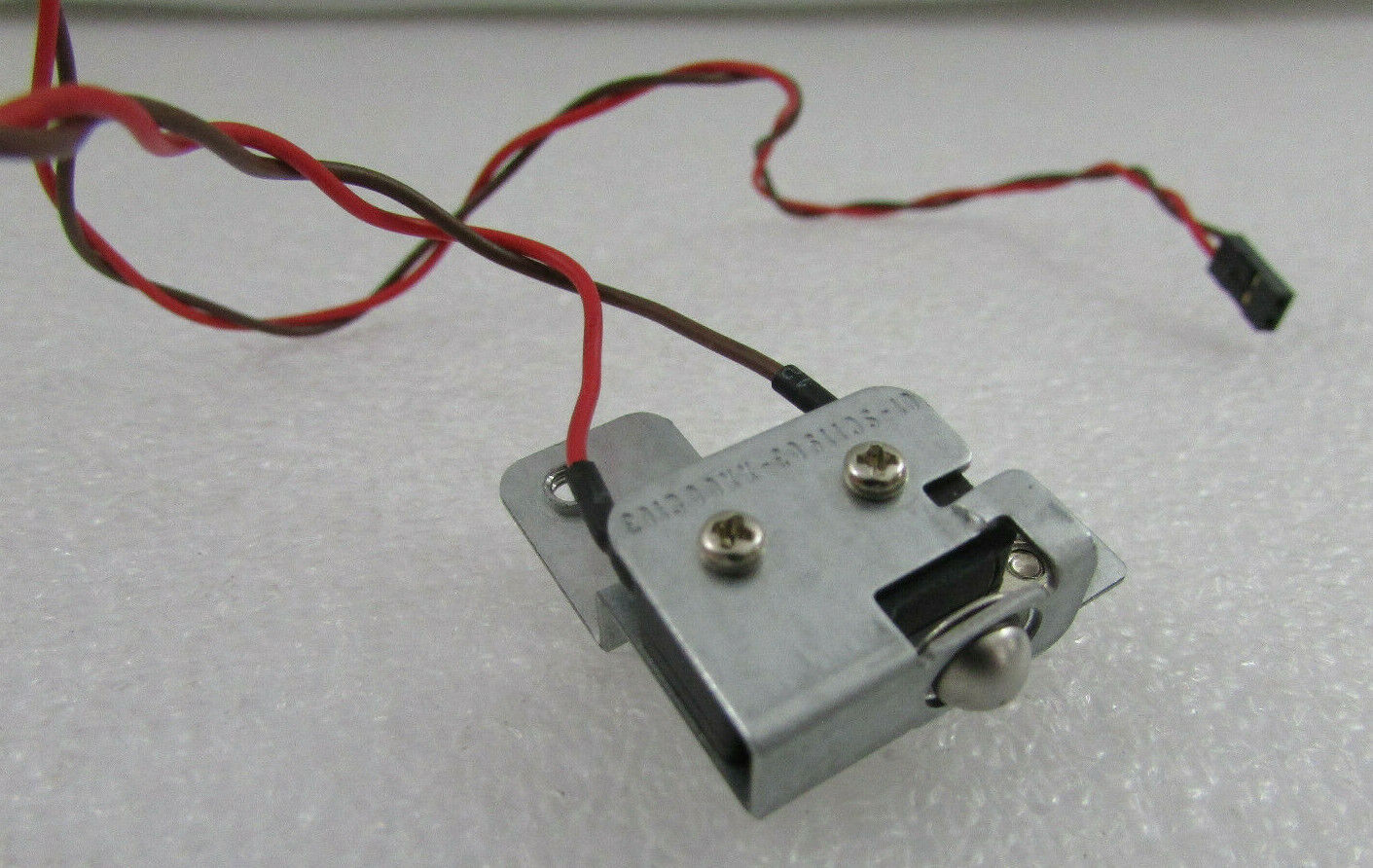Home>Home Security and Surveillance>How Does A Honeypot Fit In With The Security Provided By A Firewall And Intrusion Detection System


Home Security and Surveillance
How Does A Honeypot Fit In With The Security Provided By A Firewall And Intrusion Detection System
Modified: March 21, 2024
Learn how a honeypot enhances the security of your home security and surveillance system, working in conjunction with a firewall and intrusion detection system.
(Many of the links in this article redirect to a specific reviewed product. Your purchase of these products through affiliate links helps to generate commission for Storables.com, at no extra cost. Learn more)
Introduction
In today’s digital age, ensuring the security of our homes and personal information is of utmost importance. Home security and surveillance systems play a crucial role in safeguarding our homes and loved ones against potential threats. Among the various components that make up a robust security system, firewalls and intrusion detection systems (IDS) are commonly used. However, there is another important tool that can enhance the security provided by firewalls and IDS – the honeypot.
Firewalls and IDS systems are designed to protect networks and systems from unauthorized access, intrusion attempts, and other malicious activities. While they are effective at identifying potential threats and preventing unauthorized access, they primarily focus on blocking and detecting known attack patterns. This is where a honeypot comes in.
A honeypot is a purposefully designed system or network decoy that is set up to attract hackers and malicious actors. It acts as a trap, luring attackers into interacting with it, and helps security professionals gain valuable insights into their techniques and motives. By diverting attackers away from the actual network and towards the honeypot, the security of the network and systems can be significantly enhanced.
However, it is important to note that a honeypot should not be seen as a replacement for a firewall or IDS. Rather, it should be viewed as an additional layer of defense that complements and enhances the security provided by these systems.
In this article, we will delve deeper into the functions of firewalls, IDS systems, and honeypots, and explore how they work together to provide comprehensive security for your home.
Key Takeaways:
- Honeypots are like decoys that trick hackers and help security experts learn about their tactics, making home security stronger when combined with firewalls and IDS.
- Firewalls and IDS protect networks, while honeypots gather hacker information, creating a comprehensive defense against potential threats for homes.
Understanding the Firewall
A firewall is a network security device that acts as a barrier between an internal network (such as your home network) and external networks (such as the internet). It monitors and filters incoming and outgoing network traffic based on predefined security rules.
The primary function of a firewall is to enforce access control policies by determining which network packets are allowed to pass through and which should be blocked. It does this by examining the header information of each packet and comparing it against a set of predetermined rules.
There are several types of firewalls, including packet-filtering firewalls, stateful inspection firewalls, and application-level gateways. Each type has its own strengths and weaknesses in terms of security and performance.
Packet-filtering firewalls work by inspecting the source and destination IP addresses, ports, and protocols of individual packets. Based on the defined rules, these firewalls determine whether to allow or block the packet. While packet-filtering firewalls are fast and efficient, they have limited ability to analyze the actual content of the packets.
Stateful inspection firewalls go a step further by keeping track of the state of network connections. They not only analyze individual packets but also monitor the entire session flow. This allows them to make more informed decisions about whether to permit or deny packets based on the session history.
Application-level gateways, also known as proxy firewalls, provide the highest level of security by acting as an intermediary between internal and external networks. They establish separate connections for each application and perform detailed inspections of the application-level data. This enables them to detect and block sophisticated attacks that may bypass other types of firewalls.
Firewalls provide essential security measures by blocking unauthorized access attempts, monitoring incoming and outgoing traffic, and protecting against various network-based attacks. They help prevent unauthorized users from gaining access to your home network and sensitive data.
However, it is important to keep in mind that firewalls are not foolproof. They rely on the accuracy and effectiveness of their rule sets to determine which packets to allow or block. Additionally, firewalls may not be able to protect against certain types of attacks, such as social engineering or malware delivered through phishing emails.
Therefore, while firewalls are an integral component of home security, it is crucial to complement them with other security measures, such as intrusion detection systems (IDS) and honeypots, to create a comprehensive defense against potential threats.
Understanding the Intrusion Detection System (IDS)
An Intrusion Detection System (IDS) is a security tool that monitors network traffic and system activities to detect and respond to potential security breaches. Unlike firewalls, which focus on blocking and allowing network traffic based on predefined rules, IDS systems analyze network packets and system logs to identify any suspicious or malicious activities.
There are two main types of IDS systems: network-based IDS (NIDS) and host-based IDS (HIDS).
A Network-based IDS monitors the network traffic in real-time and analyzes it for any suspicious patterns or behaviors that could indicate an ongoing attack. It works by examining packets flowing in and out of the network, looking for known attack signatures, anomalous behavior, or any signs of unauthorized access.
A Host-based IDS, on the other hand, focuses on individual hosts or systems within the network. It monitors the activities and logs on specific machines, looking for signs of malicious activities such as unauthorized access attempts, system file modifications, or unusual network connections. HIDS systems are particularly effective at detecting insider threats or attacks that originate from within the network.
When an IDS system detects suspicious activity, it generates an alert, which can trigger various response actions depending on the configured settings. These actions can range from simply logging the event for further analysis to automatically blocking network traffic from the suspected source.
IDS systems use a combination of signature-based detection and anomaly-based detection techniques to identify potential threats. Signature-based detection relies on a database of known attack patterns and signatures to match against the network traffic or system activities. Anomaly-based detection, on the other hand, establishes a baseline of normal behavior and looks for deviations that could indicate an attack.
By monitoring network traffic and system activities, IDS systems provide valuable insights into potential security breaches, enabling security teams to respond promptly and mitigate the impact of an attack. They help identify ongoing attacks, alert system administrators about vulnerabilities or misconfigurations, and aid in forensic analysis after a security incident.
While IDS systems are effective at detecting and alerting security personnel about potential security threats, they have limitations. They can generate false positives or false negatives, leading to either unnecessary alerts or missed detections. Additionally, IDS systems may struggle to keep up with the constantly evolving landscape of new attack techniques and vulnerabilities.
Therefore, it is crucial to combine IDS systems with other security measures, such as firewalls and honeypots, to create a layered defense system that can provide comprehensive security for your home network and systems.
What is a Honeypot?
A honeypot is a security mechanism designed to deceive attackers, gather information about their tactics, and divert their attention away from critical systems. It is essentially a decoy system or network that appears legitimate but is actually isolated and closely monitored by security professionals.
The primary goal of a honeypot is to attract and trap attackers to learn more about their techniques, motives, and the vulnerabilities they exploit. It acts as a valuable source of intelligence, providing insights into the latest attack methods and helping security teams identify and address potential security weaknesses.
There are different types of honeypots, including low-interaction honeypots and high-interaction honeypots.
Low-interaction honeypots simulate a limited set of services or applications to interact with potential attackers. They mimic common vulnerabilities and provide basic information about the attack. However, because they have limited functionality, they are less resource-intensive and easier to maintain.
High-interaction honeypots, on the other hand, create a fully functioning environment that closely resembles a real system or network. They allow attackers to interact with various services and applications, providing a more realistic experience. While high-interaction honeypots capture more detailed information about the attacker’s actions, they require more resources and expertise to maintain.
Honeypots can be classified into production honeypots and research honeypots. Production honeypots are used in a live environment to actively defend against attacks and gather intelligence. They are typically deployed alongside other security measures as an additional layer of defense.
Research honeypots, on the other hand, are primarily used for academic, experimental, or research purposes. They are often deployed in controlled environments to study and analyze attack techniques, gather data, or develop countermeasures.
Honeypots are not meant to replace or directly protect critical systems. Instead, they are a proactive measure to gather information and understand the ever-evolving threat landscape. By analyzing the activities within a honeypot, security professionals can identify new attack vectors, discover zero-day vulnerabilities, and develop more effective security strategies.
Overall, honeypots play a vital role in enhancing the security provided by firewalls and intrusion detection systems (IDS). They complement these existing security measures by providing an additional layer of defense, helping to deceive attackers, and gaining valuable insights into their tactics and motivations.
The Role of a Firewall in Security
A firewall is a fundamental component of any comprehensive security strategy. It acts as a barrier between an internal network and external networks, such as the internet, and plays a crucial role in securing the network infrastructure.
One of the primary roles of a firewall is to enforce access control policies. It examines the traffic passing through the network and determines whether to allow or block it based on predefined rules. These rules can be based on various criteria, including the source and destination IP addresses, ports, protocols, or specific keywords.
By implementing access control, a firewall acts as a first line of defense, preventing unauthorized users or malicious traffic from gaining access to the internal network. It blocks potentially harmful incoming connections and denies access to unauthorized services or applications.
In addition to access control, firewalls also provide network address translation (NAT) capabilities. NAT allows multiple devices on a private network to share a public IP address, enhancing network security by obfuscating the internal IP addresses from external networks. This adds an extra layer of protection by preventing potential attackers from directly identifying and targeting individual devices on the network.
Firewalls also monitor and log network traffic, enabling network administrators to analyze the traffic patterns and identify any suspicious or unauthorized activities. This monitoring capability is crucial for identifying potential security breaches or anomalies in network behavior, allowing for timely detection and response to security incidents.
Moreover, firewalls can provide additional security features such as deep packet inspection (DPI) and application-level filtering. DPI allows the firewall to inspect the contents of network packets, analyzing them for any malicious code or known attack patterns. Application-level filtering focuses on the specific applications or protocols used in the network traffic and applies additional security measures to ensure their integrity and prevent any potential vulnerabilities from being exploited.
Firewalls also play a vital role in securing remote access to the network. They can be configured to authenticate and encrypt connections made through virtual private networks (VPNs) or remote access protocols, ensuring that only authorized users can establish connections and that the data transmitted is protected from eavesdropping or tampering.
In summary, the role of a firewall in security is multifaceted. It acts as a gatekeeper, enforcing access control policies, preventing unauthorized access, and blocking potentially malicious traffic. It provides network address translation to protect internal devices, monitors network traffic for anomalies, and offers additional security features such as deep packet inspection and application-level filtering. By effectively deploying and configuring firewalls, organizations can significantly enhance the security of their networks and systems.
The Role of an Intrusion Detection System (IDS) in Security
An Intrusion Detection System (IDS) is a crucial component of a comprehensive security strategy. While firewalls protect the network by blocking unauthorized access, IDS systems enhance security by actively monitoring network traffic and system activities to detect and respond to potential security breaches.
The primary role of an IDS is to identify and alert system administrators about suspicious or malicious activities that could indicate a potential security threat. It accomplishes this by analyzing network packets, system logs, and other data to detect patterns associated with known attack signatures, anomalous behavior, or unauthorized access attempts.
By continuously monitoring network traffic, an IDS can detect a wide range of attacks, including network scanning, denial-of-service (DoS) attacks, port scanning, brute-force attacks, and various types of malware infections. It provides an additional layer of defense beyond the access control provided by firewalls, as IDS systems can detect and respond to unknown or emerging threats.
With the ability to detect attacks in real-time, IDS systems play a crucial role in incident response and mitigation. By generating alerts, IDS systems inform network administrators about potential security breaches, allowing them to take appropriate action to contain and remediate the threat. These actions may include blocking network traffic from suspected sources, disconnecting compromised systems from the network, or launching forensic investigations to understand the scope and impact of the attack.
Another critical role of IDS systems is to aid in the identification of system vulnerabilities and misconfigurations. By analyzing network traffic and system logs, IDS systems can highlight potential weaknesses that could be exploited by attackers. This information enables system administrators to proactively patch or address vulnerabilities, minimizing the risk of successful attacks.
Furthermore, IDS systems contribute to the collection of valuable threat intelligence. By analyzing the techniques used by attackers, IDS systems can help security teams understand their motives, tactics, and trends. This intelligence can be used to develop more effective security strategies, update firewall rule sets, and share information with other security professionals to collectively strengthen defenses.
It is important to note that while IDS systems play a pivotal role in detecting and alerting about potential threats, they may generate false positives or false negatives. False positives occur when the IDS triggers an alert for benign activities, causing unnecessary alarm and wasting resources. False negatives, on the other hand, happen when the IDS fails to detect a genuine security threat, allowing attackers to operate undetected.
Therefore, it is crucial to continuously update and fine-tune the IDS system, incorporate threat intelligence, and combine it with other security measures, such as firewalls and honeypots, to create a robust security posture that effectively protects the network and systems.
A honeypot can complement a firewall and intrusion detection system by luring attackers away from the real network, allowing for better monitoring and understanding of their tactics.
How Does a Honeypot Enhance Security?
A honeypot is a powerful tool in enhancing security by deceiving attackers, diverting their attention, and gathering valuable insights into their tactics. Here are several ways in which a honeypot enhances security:
- Early Threat Detection: Honeypots act as decoys, attracting attackers away from critical systems and towards the decoy network. As attackers interact with the honeypot, security professionals can closely monitor their activities, identify attack patterns, and gain early detection of potential threats. This early insight enables timely response and mitigation, preventing attacks from infecting or compromising actual production systems.
- Vulnerability Identification: By capturing attacker interactions within the honeypot, security teams can analyze the techniques, tools, and methods employed. This allows them to identify potential vulnerabilities in the network or applications that attackers are targeting. The insights gained from honeypots help organizations proactively patch or mitigate these vulnerabilities, strengthening the overall security posture.
- Threat Intelligence: Honeypots provide valuable intelligence about the latest attack methods, tactics, and trends. By studying attacker behaviors, security teams gain a deeper understanding of the evolving threat landscape. This knowledge can be used to update firewall rules, improve intrusion detection systems, and enhance overall security defenses.
- Deception and Diversion: Honeypots divert attackers’ attention away from critical systems by mimicking attractive targets such as databases or sensitive files. By luring attackers towards honeypots, organizations can reduce the risk of attackers infiltrating and compromising important assets. Instead, attackers waste their time and resources interacting with an isolated and closely monitored environment.
- Luring and Trapping Hackers: Honeypots are designed to gather as much information as possible about attackers. By capturing their techniques, IP addresses, and other identifying information, security teams can trace them back to their source, gather evidence for legal proceedings, or even share information with law enforcement agencies.
- Training and Skill Development: Honeypots provide an opportunity for security professionals to gain hands-on experience in dealing with live attacks. By analyzing the activities within a honeypot, security teams can learn about attack methodologies, improve incident response capabilities, and fine-tune their defensive strategies.
It is important to understand that honeypots should be implemented with caution and in conjunction with other security measures. Proper planning, configuration, and monitoring are crucial to ensure that honeypots do not pose a risk to the production environment or inadvertently attract attackers to real systems. Additionally, regular updates and maintenance are necessary to keep honeypots effective and up-to-date against emerging threats.
Overall, honeypots enhance security by acting as decoys, providing early threat detection, identifying vulnerabilities, offering threat intelligence, diverting attackers’ attention, capturing attacker data, and providing opportunities for skill development. When used properly, honeypots contribute significantly to the overall security posture and help organizations stay one step ahead of potential threats.
Advantages of Using a Honeypot
Implementing a honeypot as part of your security strategy offers several advantages and benefits. Here are some key advantages of using a honeypot:
- Early Threat Detection: Honeypots act as early warning systems, providing early detection of potential threats. By diverting attackers away from critical systems and towards the honeypot, security professionals can closely monitor their activities and identify attack patterns before they can impact production systems.
- Effective Deception: Honeypots deceive attackers by mimicking attractive targets, diverting their attention from real systems. This reduces the risk of successful attacks on critical assets and provides an opportunity for security teams to gather valuable intelligence on attackers, their techniques, and motives.
- Enhanced Incident Response: Honeypots facilitate and expedite incident response processes. By capturing the actions of attackers within the honeypot, security teams can analyze their methods, identify vulnerabilities, and develop effective countermeasures. This enables faster response times and helps mitigate the impact of potential security incidents.
- Improved Threat Intelligence: Honeypots offer valuable insights into the latest attack methods and trends. By studying attacker behaviors and analyzing captured data, security teams gain a deeper understanding of evolving threats. This intelligence enhances overall threat detection and contributes to the development of stronger defense strategies.
- Reduced Attack Surface: By funneling attackers into honeypots, organizations reduce the attack surface for real systems. Attackers wasting their time and resources on non-operational decoys are less likely to target and compromise critical assets. This provides an additional layer of protection for important resources.
- Legal and Forensic Benefits: Honeypots capture information about attackers, including their IP addresses, methods, and actions. This data can be invaluable for legal proceedings, incident response investigations, or sharing with law enforcement agencies. It helps in identifying and tracking attackers, aiding in the pursuit of justice.
- Training and Skill Development: Honeypots provide security professionals with hands-on experience in dealing with live attacks. By analyzing honeypot interactions, security teams can improve incident response capabilities, enhance their skills, and gain valuable knowledge in identifying and countering different attack techniques.
It is important to note that while honeypots offer numerous advantages, they should be implemented and maintained with care. Proper planning, configuration, and monitoring are necessary to ensure that honeypots do not introduce vulnerabilities or become a liability to real systems. Regular updates and maintenance are essential to keep honeypots effective and up-to-date against emerging threats.
Overall, the advantages of using a honeypot include early threat detection, effective deception, improved incident response, enhanced threat intelligence, reduced attack surface, legal and forensic benefits, and opportunities for training and skill development. By incorporating honeypots into your security strategy, you can significantly enhance your ability to detect, respond to, and mitigate potential security threats.
Potential Challenges and Limitations of Honeypots
While honeypots offer significant advantages in enhancing security, it is important to be aware of the potential challenges and limitations associated with their deployment. Here are some key considerations:
- Resource Intensive: Deploying and maintaining honeypots can be resource-intensive, requiring dedicated hardware, network resources, and personnel. Honeypots need to be regularly updated and monitored to ensure their effectiveness. Organizations must carefully consider the allocation of resources before implementing honeypots.
- Increased Attack Surface: Incorrectly implemented honeypots may introduce new vulnerabilities and increase the overall attack surface. If honeypots are not carefully isolated from production systems, attackers may use them as a stepping stone to access critical assets. Proper segmentation and isolation are essential to minimize this risk.
- False Positives and False Negatives: Honeypots can generate both false positives and false negatives. False positives occur when legitimate users or automated systems inadvertently trigger alerts within the honeypot, leading to unnecessary alarm or wasted resources. False negatives happen when attackers successfully bypass or evade the honeypot, remaining undetected. Regular fine-tuning and monitoring are necessary to minimize such occurrences.
- Legal and Ethical Concerns: Depending on the jurisdiction, there may be legal and ethical considerations surrounding the use of honeypots. Capturing and analyzing attacker activities can raise privacy concerns, and organizations must ensure that honeypot deployments comply with applicable laws and regulations. Consulting legal counsel is advisable to navigate these potential challenges.
- Maintenance and Updating: Honeypots require regular maintenance, updates, and patching to remain effective against emerging threats. Without proper maintenance, honeypots can become outdated, losing their effectiveness as attackers evolve their techniques. Organizations must dedicate resources and establish a process for maintaining and updating honeypots regularly.
- Attackers Learning and Evolving: Sophisticated attackers may recognize honeypot environments and alter their behavior accordingly. They might use honeypots as a means to gather information about security measures or even launch counterattacks. Security teams need to account for these adversarial tactics and adapt their honeypot defenses accordingly.
Despite these challenges, with proper planning, implementation, and ongoing maintenance, honeypots can be valuable tools in enhancing overall security measures. Organizations must carefully evaluate the benefits, potential risks, and feasibility before deploying honeypots within their security strategy.
By taking a proactive and cautious approach, organizations can successfully leverage honeypots to gather valuable intelligence, improve incident response capabilities, and enhance overall defense against evolving threats.
Read more: How Does Intrusion Detection System Work
Integrating a Honeypot with a Firewall and IDS
Integrating a honeypot with a firewall and intrusion detection system (IDS) can create a comprehensive and layered defense system against potential security threats. Here are some key considerations for effectively integrating these components:
- Segmentation and Isolation: It is crucial to properly segment and isolate the honeypot from the production network. This ensures that attackers who interact with the honeypot are directed away from critical systems. By implementing network segmentation and isolation, security teams can minimize the risk of attackers gaining unauthorized access to sensitive assets.
- Alert Fusion: Integrating the alerts generated by the honeypot, firewall, and IDS systems can provide a unified view of potential threats. By consolidating alerts, security teams can more effectively identify patterns, prioritize response efforts, and gain a comprehensive understanding of the security landscape. This facilitates efficient incident response and reduces the chances of missing critical security events.
- Threat Intelligence Sharing: Honeypots, firewalls, and IDS systems can generate valuable threat intelligence. By sharing this information across these components, organizations can improve the overall security posture. Threat intelligence sharing helps in updating firewall rules, fine-tuning IDS systems, and enriching the honeypot with the latest attack signatures and patterns.
- Coordinated Response: Integrating the response mechanisms of the honeypot, firewall, and IDS systems allows for a coordinated and automated response to potential threats. For example, if an IDS system detects suspicious activity, it can trigger the firewall to block traffic from the source IP address while simultaneously redirecting the attacker to the honeypot. This facilitates a faster and more efficient response, minimizing the risk of compromise and reducing the manual intervention required.
- Continuous Monitoring and Analysis: Regular monitoring and analysis of all integrated components are essential to maintaining an effective security posture. Continuous monitoring helps ensure that the firewall, IDS systems, and honeypot are operating correctly and identifying potential threats. Security teams should regularly review logs, alerts, and captured data to identify any anomalies, improve rule sets, and proactively address emerging threats.
- Regular Updates and Testing: Implementing regular updates, patches, and testing for all integrated components, including the firewall, IDS systems, and honeypot, is crucial for their effectiveness. This ensures that the security systems are equipped with the latest security measures, signatures, and techniques to detect and respond to evolving threats.
Integrating a honeypot with a firewall and IDS systems enhances overall security by providing a layered defense approach. The honeypot acts as an additional decoy, diverting attackers away from critical systems, allowing security teams to gather valuable intelligence. Meanwhile, the firewall and IDS systems provide access control, threat detection, and response capabilities to protect the network from unauthorized access and detect any malicious activities.
It is important to note that the integration of these components requires careful planning and configuration to avoid introducing vulnerabilities. Organizations should consider the specific security requirements, network architecture, and the sensitivity of the assets being protected. Regular monitoring, maintenance, and updates are crucial to ensure the continued effectiveness of the integrated security ecosystem.
By integrating a honeypot with a firewall and IDS systems, organizations can establish a robust defense system that enhances threat detection, response capabilities, and overall security resilience.
Conclusion
In today’s digital landscape, ensuring the security of homes and personal information is paramount. Firewalls and intrusion detection systems (IDS) have long been relied upon to protect networks and systems from potential threats. However, incorporating a honeypot into the security strategy can enhance the overall defense system.
A honeypot acts as a decoy, diverting attackers away from critical systems and gathering valuable insights into their tactics and motives. By analyzing attacker behavior within the honeypot, security professionals can gain early threat detection, identify vulnerabilities, and develop more effective security strategies.
Firewalls play a crucial role in securing the network by enforcing access control and providing network address translation (NAT). They block unauthorized access attempts, prevent malicious traffic from entering the network, and obfuscate internal IP addresses.
IDS systems, on the other hand, focus on monitoring network traffic and system activities to detect and respond to potential security breaches. They provide an additional layer of protection by identifying known attack patterns, analyzing network behavior for anomalies, and facilitating incident response.
Integrating a honeypot with a firewall and IDS systems offers several key benefits. It enhances threat detection, diverts attackers’ attention from critical systems, provides early warning signs of potential attacks, and aids in incident response and mitigation. Furthermore, the combination of honeypots, firewalls, and IDS systems collectively improves the overall security posture while providing valuable threat intelligence.
However, there are challenges and limitations associated with honeypots. They require dedicated resources, careful configuration, and ongoing maintenance. False positives, false negatives, legal considerations, and the need for continuous updates pose potential challenges that should be considered when deploying honeypots.
In conclusion, a comprehensive security strategy should leverage the strengths of firewalls, intrusion detection systems, and honeypots. These components work in conjunction to provide a multi-layered defense against potential threats. By understanding how each component contributes to security and effectively integrating them within the network infrastructure, organizations can enhance their ability to detect, respond to, and mitigate security risks. Stay vigilant, adapt to emerging threats, and continually evaluate and enhance the security measures to safeguard homes, networks, and personal information in an ever-evolving digital landscape.
Frequently Asked Questions about How Does A Honeypot Fit In With The Security Provided By A Firewall And Intrusion Detection System
Was this page helpful?
At Storables.com, we guarantee accurate and reliable information. Our content, validated by Expert Board Contributors, is crafted following stringent Editorial Policies. We're committed to providing you with well-researched, expert-backed insights for all your informational needs.













